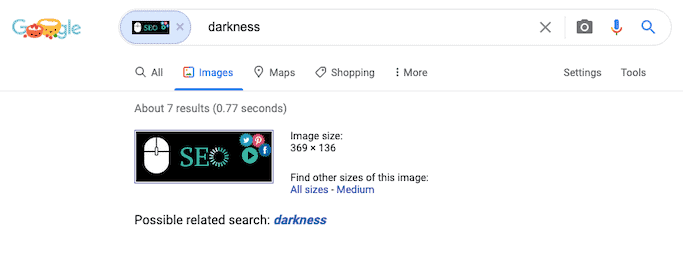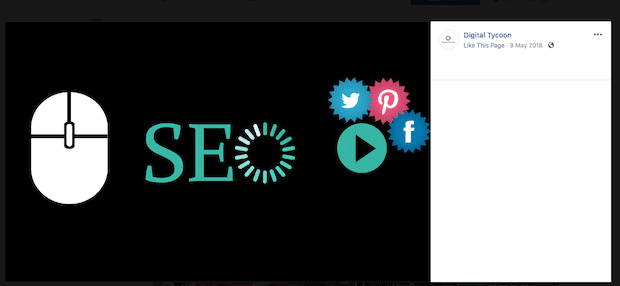When I finally decided to get this site up and running properly, I made a mental note to add as many unique images as possible, for 2 3 reasons:
1. I’m fed up of seeing the same cheap stock photo SEO images all over the net,
and, more importantly:
2. To test how much value unique images carry when it comes to ranking and visitor engagement,
but also because:
3. There must be more creative ways to represents themes visually.
Seriously, though, how many times have you come across these guys:
- the SEO magnifying glass
- the SEO wordcloud
- or, better yet, the SEO magnifying glass looking at a wordcloud!
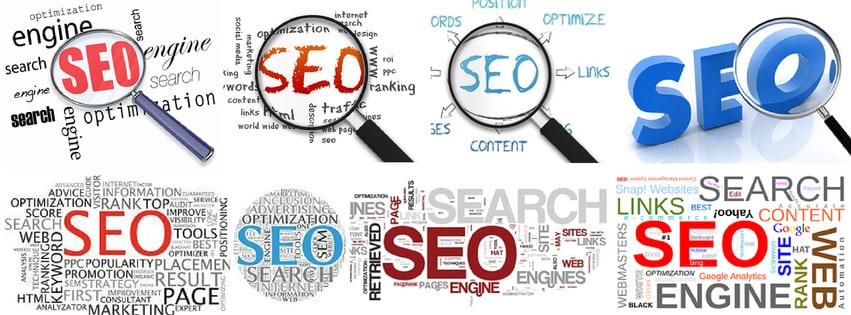
I’m not a professional designer, but I know my way around Photoshop and there’s no excuse for these sloppy images still ranking #1 on Google images for “SEO”. Let’s see what we can do about that.
Good SEO Practice For Images
There are two main factors to consider when optimising images for search engines:
- File Title
- Alt Text
Of course, you should also keep the file sizes low and add captions if you’re being thorough (here’s a great summary on image optimisation for reference). One thing that most of the SEO image guides neglect to mention is uniqueness. While I can see that the top images on Google.com for “SEO” are clearly boring and repetitive, they are all distinct from each other (i.e. anyone scraping these images isn’t ranking top). We know that images are important for SEO because they help us get traffic and rank, but does Google really care what they depict?
Dropping the top image (from forbes.com) back into the Google search gives me an endless “Uploading file” wheel as it’s 1.5MB (who says small sizes are better, eh?). Trying the #2 image gives about 23 results (presumably for people who copied the original image). Not only are these ‘top ranking’ images unoriginal, they are also copied.
A quick bing.com image search for “seo” brings up yet more of the same images (notice any familiar faces?) but, surprise surprise, they are from different domains!

Here are the stats for the Top 5 images for “SEO” on Google.com (as of June 19th 2014) so we can see what helps them rank:
seo3.jpg
alt=SEO3
From:forbes.com

Tactical-SEO.jpg
alt missing
From:tacticalseo.com

Sunshine-Coast-SEO.jpg
alt=The Truth About Sunshine Coast SEO
From:sunshinecoastseo.com
seo-process.gif
alt=seo-process
From:fusewave.co.uk

seo2.jpg
alt=seo
From: smpsboston.wordpress.com
The Challenge
As you would expect, almost all of the images have the keyword “seo” in the file name and alt tag. The experiment is to see how long it takes for the image at the top of this post to get indexed for “seo”. The file is simply named seo.jpg and alt=seo can’t do any harm (famous last words). The image is unique, but also stylistically different to the other seo images Google churns out. My question is: will it rank for being unique, or will it be ignored because it doesn’t fit Google’s pattern.
I’ll report back in a few weeks with the results, of course, but in the meantime, what are your experiences with SEO images? In a world of stock photography, do unique photos matter at all for SEO?
The Results
It’s been a good 7 months since I first wrote this post (thanks to @CaptMullet for the reminder!) and very little has changed since I did my first follow-up after a few weeks:
I’m Not Hitler! When Google Images Gets It Very Wrong
To summarize, the original SEO image you see at the top of this post was incorrectly tagged as “ss division” by Google. To make matters worse, the Google (and Bing) image results for “SEO” are still largely the same, with only a smattering of slightly ‘modernized’ designs making it into the top 100.
So, the lessons learned here are as follows:
1. Google thematically groups image sets; if your original designs differ significantly (like mine did by using a black background), the algorithm will miss you.
2. It might actually help SEO to use unoriginal images, providing they have been correctly tagged by Google.
Just look how many websites are using this single stock SEO image:
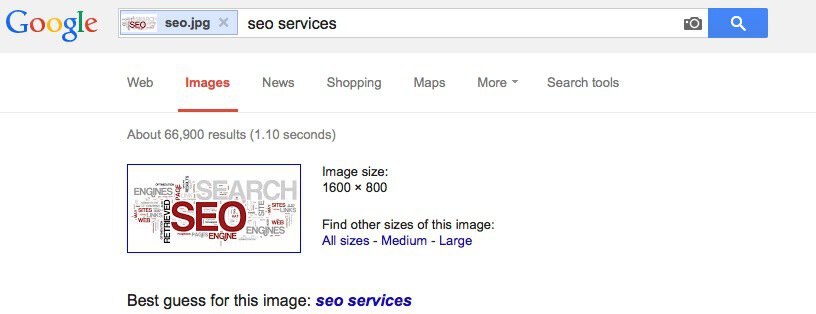
(about 66,900 to be exact)
Google knows the image is related to “seo services”, so by using the unedited image on your site (changing the dimensions is fine), you’re automatically telling Google that your page is about “seo services”. Can’t hurt, can it?
Of course, original images have tonnes of other benefits, like increasing brand awareness, giving users something to share (Pinterest backlinks anyone?) and helping CTR on sharing platforms.
I’ll be keeping my incorrectly-tagged SEO image for old times’ sake, but I doubt it will help with SEO one bit…
2020 UPDATE:
Overall, it’s nice to see more diverse images in a search for “SEO”, but the magnifying glass word cloud is alive and well:
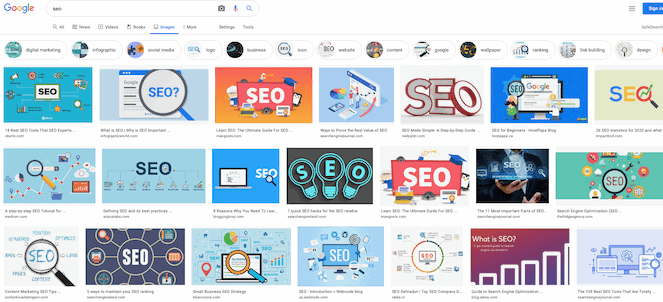
It seems that Google has slightly improved its image categorizing abilities… instead of “ss division”, I now get “darkness”. Maybe it will figure out the true category in another 5 years…
